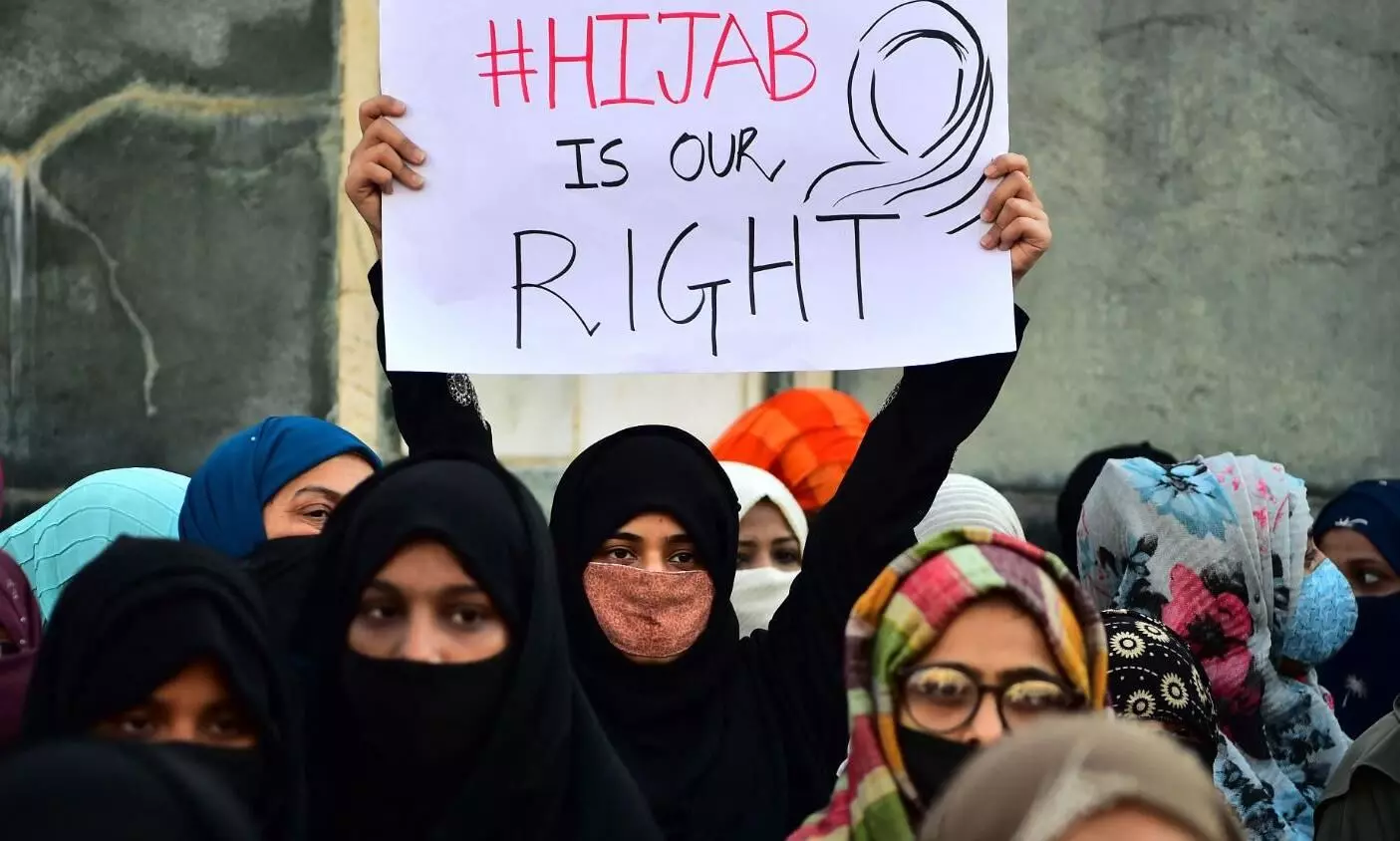
Hijab: It is the right of personal choices that is to be protected
text_fieldsDemocracy is the celebration of diversity, it is said, ever since the very concept began to overtake the oppressive and anti-human governments based on autocracy and theology. So beautiful is the concept that within it people who adhere to diverse schools of thought had been taught to tolerate each other to practice their respective creed, both in public and private spheres, as long as it does not encroach on or harm the rights of others.
So do the values of democracy play its part, but under its modern definition it appears as though it will only be applied at the whims of democratically elected governments. The majoritarian dominance thus could exert its power upon the democracy, by which the cardinal principles of it can be seen being toppled and a new definition born.
So much is said here to narrate how democracy's beauty is being spoiled in the context of prevailing majoritarian theological dominance in the governments in some parts of the world. The case of India is no different. Not a theological state as per the constitution, Indian democracy began to show its decadence. Despite being celebrated as the largest in the world and also as one of the largest examples of democracy, it is now in tandem with the majoritarian theology.
While the democratic values impel us to see different religions, isms and philosophical adherence in the perspective of a democratic citizen, the elected government whose leadership represents a certain theology—tries to bring uniformity in thoughts and practice. On the strength of power grabbed through democracy, theological government tries to dominate others' beliefs, thoughts, and practices.
The ongoing hijab issue in India's Karnataka state where the BJP, a party based on the far right theology, is at the rule exemplifies the dominance of a particular theology that works to bring other thoughts and practices in line with its principles and thoughts.
Now, the matter is with the Karnataka High Court. The court is hearing multiple views related to wearing of hijab. One of the arguments the state government has put forth is that hijab wearing is not an essential practice for women in Islam. The question whether it is an essential practice in accordance with Holy book of Muslims, has also been put forth before the petitioners to prove.
The government pushed the court to delve into the Quran to fish out the verses that make hijab mandatory for Muslim women. The past is also being brought to the court to illustrate hijab as an oppressive tool to subjugate women. May be, they could unearth incidents that do match with their intentions.
But, the biggest question is who decides what is essential for a person other than the person himself as signified under the freedom of personal choice in the Indian constitution. All other arguments would turn irrelevant beside the issue of personal choices, as long as they do not harm the choices and freedom of others or cause others any discomfort in the public. What to think, what should be discarded, and what should be taken as essential all come under personal choices. Maybe there will be innumerable principles as essentials and mandatory practices in a religion or with isms for its followers, and it is up to the person to decide what he or she should adopt and practise as essential in a democratic country.
However, the matter would be different in a country which runs on theocracy and autocracy. In countries run by theocracy, the personal choices are superseded by the principles upon which the governing structure is elected. But in a democratic country where the constitution is considered a holy book, it is the responsibility of the pillars of +government, consisting of the elected governments, judiciary and even including the press, to protect the sacredness of the holy book, whereby the violation of the constitutional principles should be seen with grave concern.
And there is the issue of wearing hijab. As long as a girl or woman wishes to wear what she thinks as essential in accordance with her faith, the government is responsible to protect her personal choice as a right of a citizen. As long as a woman believes the constitution empowers her to practise her choices, and the choices harm none in the public, the matter to be decided now by the state is whether it should be abandoned in the name of uniformity or she should be empowered to live a life of her choice.
What statistics say on women to cover their heads?
Washington-based Pew Research Centre had conducted a survey under the title Religion in India: Tolerance and Segregation between 2019 and 2020 before the COVID-19 pandemic. The survey emphasises that 89 per cent of Indian Muslim women cover their heads when they step out of their homes.
According to the survey, about one-in-four Muslim women in the South (23%) say they wear a hijab, compared with single-digit percentages elsewhere in the country. Nearly 23 per cent Muslim women in south India have been found to be wearing hijab outside their homes. Meanwhile, wearing the burqa was the most common practice in western India (67%), followed by northern (61) and southern (59%) regions of the country.
And this is not just about Muslim women who dress differently in the public spaces, there are 86 per cent Sikh women, 59 per cent Hindu women and 21 per cent Christian women who claimed they would cover their heads outside their home.
Head covering is not the only religious symbolism being practised in India, where most of the people consider religion as integral part of their life. 18 per cent Hindus (mostly Brahmins) wore a janeu (a sacred thread around their upper torso), while 53 per cent Hindu men wore the tilak; 69 per cent Sikhs wore a turban; and 51 per cent of all people surveyed (including 51 per cent Hindus and 50per cent Muslims) across religions said that they generally wore "a religious pendant, such as an amulet, cross, image or symbol of god."
The study notes, "In general, Indians with higher religious observance are more likely to follow these practices related to clothing and appearance."
























